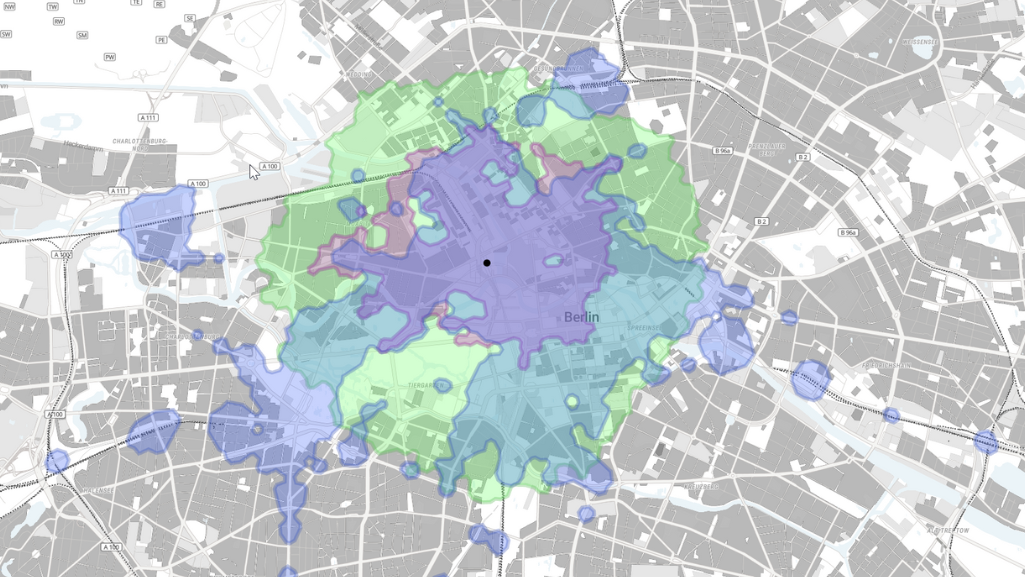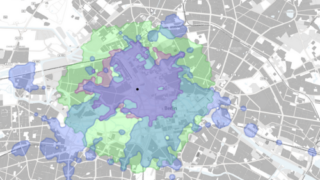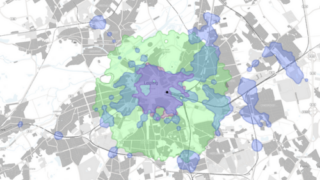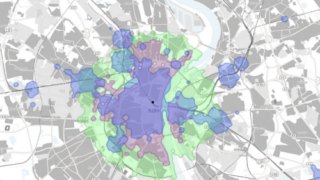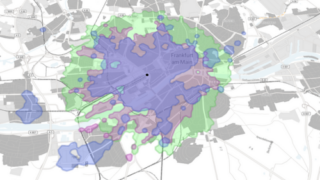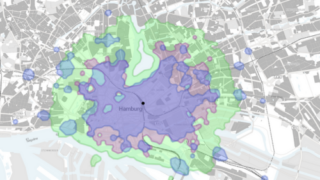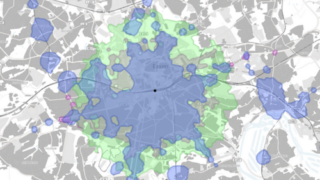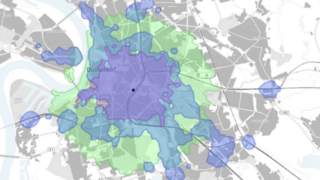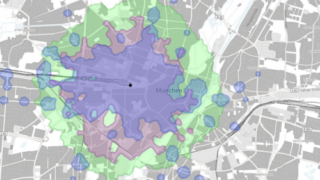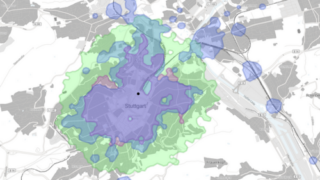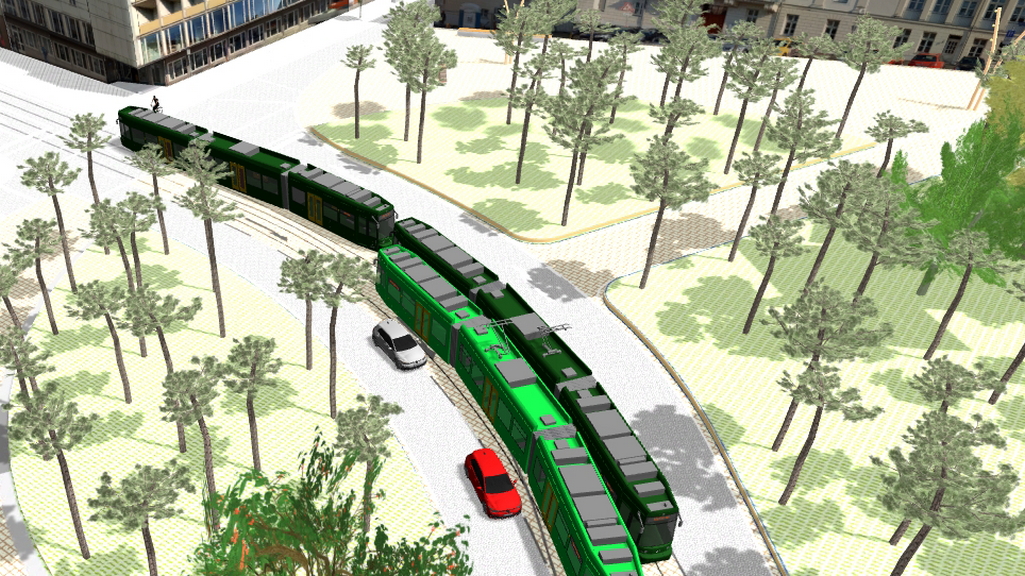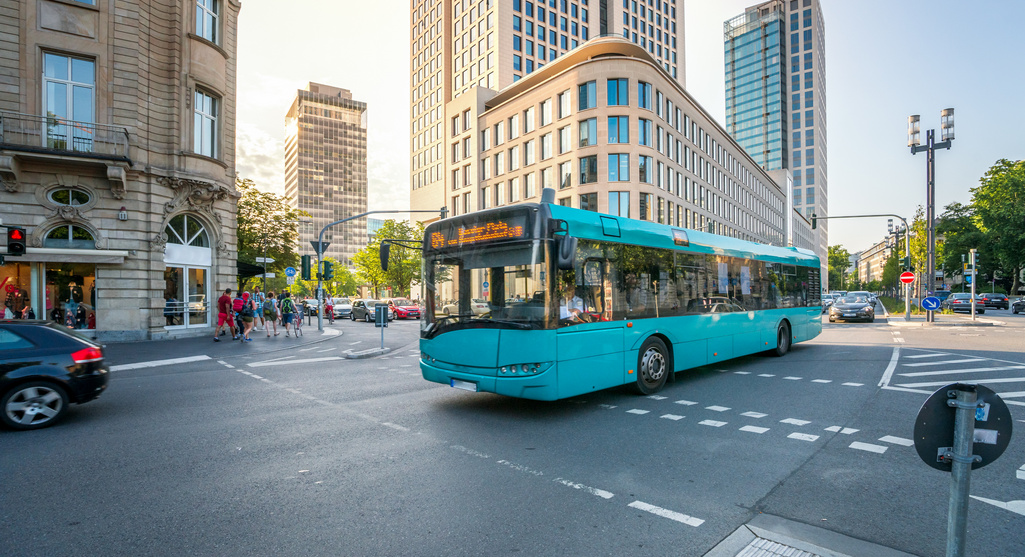Which mode of transport is the fastest in the city center? Bike, public transport or private car?
We used our tool PTV Access to take a closer look at nine German cities to check how far you can get from the main train station in 15 minutes during morning rush hour. For public transport, we considered connections between 7:00 and 9:00. For cars, we estimated the travel speed at 8:00 AM.
🟩 = 🚲
🟪 = 🚗
🟦 = 🚋
Click on the pictures to browse through the results. Some might be surprised to find that bikes come furthest in all the examples. Or maybe not – at least not the ones who in the past cycled past lines of cars in the morning rush hour.
Berlin
In 2018, Berlin implemented a mobility law that prioritized eco-mobility over car traffic within the city. By 2030, the law sets forth a comprehensive plan for the creation of an extensive network of bicycle lanes in Berlin, comprising cycle highways and regular routes, spanning a total distance of 2700 kilometers. Nevertheless, the metropolis is currently engaged in intense discussions regarding the desired form and scope of this transformative shift in transportation.
Leipzig
Leipzig’s Vision 2030 is centered around the goal of ensuring safe, dependable, eco-friendly, affordable, and inclusive mobility for everyone. The city’s mobility strategy places a strong emphasis on prioritizing sustainable modes. To support these efforts, both Leipzig and the city’s public transport provider rely on cutting-edge technology provided by PTV. A robust transport model serves as the foundation for informed decision-making and effective planning.
Cologne
In Cologne, the bicycle is now used almost as often as the car. According to a recently conducted mobility survey by the city, Cologne residents use bicycles for every fourth trip (25%). While in 2017 the car was still more popular at 43%, it now also has a share of 25%. Pedestrian traffic has risen to 33% in 2022. However, the share of public transport has dropped in some cases.
Frankfurt a.M.
Frankfurt strives for a citizen-centric approach, turning towards sustainable mobility. The city council adopted the “bike-friendly Frankfurt” resolution in the summer of 2019. Additionally, Frankfurt has embarked on implementing a new Mobility Master Plan, which PTV’s consultants actively contributed to. These initiatives pave the way towards fostering a more sustainable and environmentally conscious urban mobility system.
Hamburg
Hamburg has implemented various forward-looking initiatives to shape the future of mobility and is often named as one of the pioneers in the field of smart mobility. The city is exploring concepts like AVs and shared mobility solutions to address transportation challenges. One of the most impressive projects currently is #transmove. PTV is working with other partners to develop an AI-supported tool for smart and sustainable mobility forecasts.
Essen
Essen has committed itself to a transformative vision for the city’s mobility by 2050. The goal is to achieve a balanced modal split known as “4 x 25%.” This implies that all transportation within the city should be evenly distributed among car traffic, cycling, walking, and public transport. To accomplish this, Essen is pushing the topic connected mobility with a dedicated project granting PTV software and services a vital part in it.
Dusseldorf
Every day, Dusseldorf witnesses the movement of over 640,000 residents and more than 300,000 commuters. The city’s approach to mobility planning is comprehensive, considering all modes of transportation and addressing important concerns such as road safety and climate protection. Dusseldorf’s mobility plan takes a holistic view, recognizing the interconnectivity of various transportation options and the need for sustainable practices.
Munich
Munich has embraced ambitious objectives through its mobility plan, aiming to attain climate-neutral transportation within the city by 2035. The city demonstrates a receptive stance towards innovative technologies, as exemplified by the Tempus project, which conducts research on autonomous driving. Additionally, the city places significant importance on road safety, acknowledging it as a key area of concern.
Stuttgart
In the Stuttgart region, the total distance covered by cars on a daily basis exceeds 53 million kilometers. Currently, cars represent 43% of the modal split, while public transport and cycling account for 12% and 7%, respectively. By 2030, there is a concerted effort to implement an integrated and inclusive mobility concept. For example by developing a climate mobility plan, supported by the expertise of PTV’s consultants.
Why are visualizations important?
Data-driven analytics and visualizations are crucial when it comes to shaping cities in a future-oriented way.
Today, urban and transportation planners face a complex task. Not only do they have to consider aspects such as safety, accessibility, environmental impact and economic factors in mobility planning, but also the interests and needs of different stakeholders. After all, citizens, commuters or companies usually have different needs and perspectives when it comes to urban and mobility planning projects.
Powerful visualizations play an increasingly important role here, especially when dealing with different stakeholders and the public. Tools like PTV Visum Publisher, enable planers to communicate public meeting content, maximize public involvement, and increase project/plan acceptance by being transparent.
